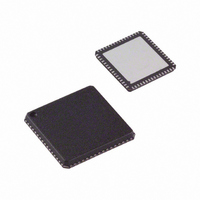AD9866BCP Analog Devices Inc, AD9866BCP Datasheet - Page 33

AD9866BCP
Manufacturer Part Number
AD9866BCP
Description
IC FRONT-END MIXED-SGNL 64-LFCSP
Manufacturer
Analog Devices Inc
Datasheet
1.AD9866-EB.pdf
(48 pages)
Specifications of AD9866BCP
Rohs Status
RoHS non-compliant
Rf Type
HPNA, VDSL
Features
12-bit ADC(s), 12-bit DAC(s)
Package / Case
64-VFQFN, CSP Exposed Pad
Operating Supply Voltage (typ)
3.3V
Operating Supply Voltage (min)
3/3.135V
Operating Supply Voltage (max)
3.6/3.465V
Operating Temp Range
-40C to 85C
Operating Temperature Classification
Industrial
Package Type
LFCSP
Mounting
Surface Mount
Pin Count
64
Lead Free Status / RoHS Status
Not Compliant
Available stocks
Company
Part Number
Manufacturer
Quantity
Price
Company:
Part Number:
AD9866BCP
Manufacturer:
ADI
Quantity:
329
Part Number:
AD9866BCP
Manufacturer:
ADI/亚德诺
Quantity:
20 000
Part Number:
AD9866BCPZ
Manufacturer:
ADI/亚德诺
Quantity:
20 000
Company:
Part Number:
AD9866BCPZRL
Manufacturer:
SAMSUNG
Quantity:
2 100
RECEIVE PATH
The receive path block diagram for the AD9866 (or AD9865) is
shown in Figure 68. The receive signal path consists of a 3-stage
RxPGA, a 3-pole programmable LPF, and a 12-bit (or 10-bit)
ADC. Note that the additional 2 bits of resolution offered by the
AD9866 (vs. the AD9865) result in a 3 dB to 5 dB lower noise
floor depending on the RxPGA gain setting and LPF cutoff
frequency. Also working in conjunction with the receive path is
an offset correction circuit. These blocks are discussed in detail
in the following sections. Note that the power consumption of
the RxPGA can be modified via Register 0x13 as discussed in
the Power Control and Dissipation section.
ADIO[11:6]/
ADIO[11:6]/
RXEN/SYNC
RX PROGRAMMABLE GAIN AMPLIFIER
The RxPGA has a digitally programmable gain range from
−12 dB to +48 dB with 1 dB resolution via a 6-bit word. Its
purpose is to extend the dynamic range of the Rx path such that
the input of the ADC is presented with a signal that scales
within its fixed 2 V input span. There are multiple ways of
setting the RxPGA’s gain as discussed in the RxPGA Control
section, as well as an alternative 3-bit gain mapping having a
range of −12 dB to +36 dB with 8 dB resolution.
The RxPGA is comprised of two sections: a continuous time
PGA (CPGA) for course gain and a switched capacitor PGA
(SPGA) for fine gain resolution. The CPGA consists of two
cascaded gain stages providing a gain range from −12 dB to
+42 dB with 6 dB resolution. The first stage features a low noise
preamplifier (< 3.0 nV/rtHz), thereby eliminating the need for
an external preamplifier. The SPGA provides a gain range from
0 dB to 6 dB with 1 dB resolution. A look-up table (LUT) is
used to select the appropriate gain setting for each stage.
The nominal differential input impedance of the RxPGA input
appearing at the device RX+ and RX− input pins is 400 Ω//4 pF
(±20%) and remains relatively independent of gain setting. The
PGA input is self-biased at a 1.3 V common-mode level allowing
maximum input voltage swings of ±1.5 V at RX+ and RX−. AC
coupling the input signal to this stage via coupling capacitors
(0.1 µF) is recommended to ensure that any external dc offset
PGA[5:0]
Rx[5:0]
Tx[5:0]
RXCLK
SPORT
6
4
Figure 68. Functional Block Diagram of Rx Path
REGISTER
CONTROL
10/12
80MSPS
ADC
MAPPING
GAIN
LUT
0 TO 6dB
∆ = 1dB
CLK
SYN.
SPGA
–6 TO 18dB
∆ = 6dB
AD9865/AD9866
MULTIPLIER
2-POLE
2
LPF
M
CLK
–6 TO 24dB
∆ = 6dB
1-POLE
LPF
CLKOUT_1
CLKOUT_2
OSCIN
XTAL
RX+
RX–
Rev. A | Page 33 of 48
does not get amplified with high RxPGA gain settings,
potentially exceeding the ADC input range.
To limit the RxPGA’s self-induced input offset, an offset
cancellation loop is included. This cancellation loop is
automatically performed upon power-up and can also be
initiated via SPI. During calibration, the RxPGA’s first stage is
internally shorted, and each gain stage set to a high gain setting.
A digital servo loop slaves a calibration DAC, which forces the
Rx input offset to be within ±32 LSB for this particular high
gain setting. Although the offset varies for other gain settings,
the offset is typically limited to ±5% of the ADC’s 2 V input
span. Note that the offset cancellation circuitry is intended to
reduce the voltage offset attributed to only the RxPGA’s input
stage, not any dc offsets attributed to an external source.
The gain of the RxPGA should be set to minimize clipping of
the ADC while utilizing most of its dynamic range. The maxi-
mum peak-to-peak differential voltage that does not result in
clipping of the ADC is shown in Figure 69. While the graph
suggests that maximum input signal for a gain setting of −12 dB
is 8.0 V p-p, the maximum input voltage into the PGA should
be limited to less than 6 V p-p to prevent turning on ESD
protection diodes. For applications having higher maximum
input signals, consider adding an external resistive attenuator
network. While the input sensitivity of the Rx path is degraded
by the amount of attenuation on a dB-to-dB basis, the low noise
characteristics of the RxPGA provide some design margin such
that the external line noise remains the dominant source.
Figure 69. Maximum Peak-to-Peak Input vs. RxPGA Gain Setting
8.0000
4.0000
2.0000
1.0000
0.5000
0.2500
0.1250
0.0625
0.0312
0.0156
0.0100
–12
–6
that Does Not Result in ADC Clipping
0
6
12
GAIN (dB)
18
24
30
36
AD9866
42
48













